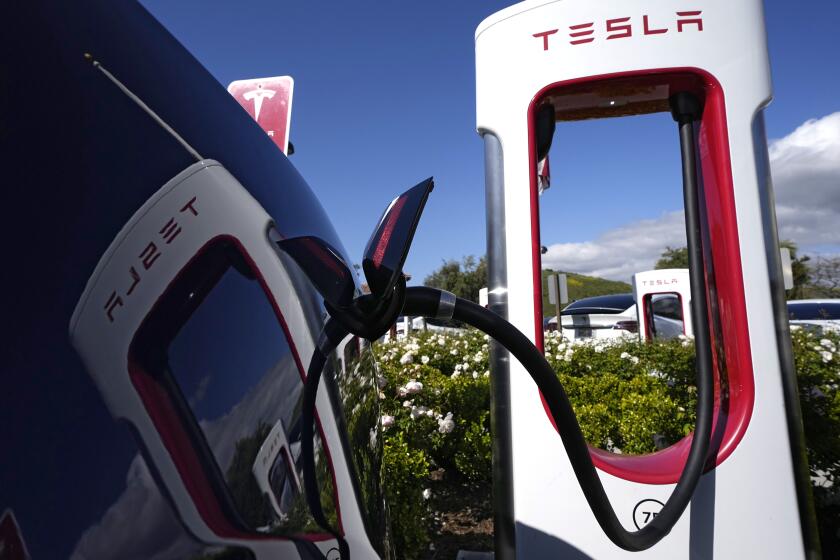Better tires, better ‘tude
Driving less, taking the bus or investing a huge sum on a more fuel-efficient vehicle are a few ways to lower your gasoline costs and help the environment
But it doesn’t have to be so painful. Though there are many ways to be more fuel efficient, here are two easy steps, one somewhat obscure and the other more obvious: using fuel-efficient tires and changing your acceleration habits.
The California Energy Commission is just starting the rule-making process for standards that would require tire manufacturers to sell tires that are more fuel efficient and provide consumers with information that would disclose the efficiency of the products.
As you cruise down the highway, your engine consumes gasoline to push against resistance of the tires on the pavement and, to a lesser extent, air resistance against the vehicle.
Consumers can get a lot of information about a tire’s temperature rating, load rating and speed rating but nothing about its rolling resistance.
High resistance can increase gasoline consumption by as much as 10%, said Mike Wischhusen, Michelin’s director for industry standards and government standards.
There is no way a consumer can distinguish an efficient tire from an inefficient one. The rolling resistance of a tire is not directly linked to its profile, its tread pattern, its noise characteristics or its traction, Wischhusen said.
Under-inflated tires tend to have greater rolling resistance, one of the biggest contributors to gasoline waste in the nation.
A report by the National Research Council in 2006 concluded that a 10% overall reduction in rolling resistance would be possible in new technology tires, which would save 1 billion to 2 billion gallons of fuel annually. Such an improvement would save vehicle owners $12 to $24 annually, while costing about $1 to $2 in higher tire prices.
The least rolling resistance is probably provided by a railroad car, running a steel wheel on a steel track. Engineers measure rolling resistance in kilograms per ton, which is determined by dividing the retarding force on a tire by the downward force on the tire.
A railroad wheel has less than 1 kilogram per ton of rolling resistance. A high-pressure bicycle tire for road racing has about 2.5 kilograms per ton. The best car tires have about 7 kilograms per ton and the worst about 14 kilograms per ton.
Tire makers could produce a rigid tire that would have very low rolling resistance and extremely high tire pressure, but Wischhusen said it would cause such a harsh ride that passengers would find their fillings rattling loose. It would also negatively affect handling and braking.
But recent technological advances improve rolling resistance without compromising noise, handling, braking or safety or creating added noise.
The federal energy bill still working its way through Congress has requirements for rolling resistance. It is three years behind similar legislation in California, which passed its bill in 2004 requiring the energy commission’s current effort.
The tire industry bristled at California’s regulation initially, but now major companies such as Michelin and Goodyear are on board, said Claudia Chandler, an agency spokeswoman. By next year, the agency intends to set standards for rolling resistance and have a label that would disclose to consumers the efficiency rating of aftermarket tires, she said.
The second way to save gasoline is to change our driving habits, though it requires a mental adjustment and a rejection of the culture that the auto industry fosters so effectively .
The Environmental Protection Agency last year changed its fuel-efficiency testing to reflect better how Americans drive: with a heavy foot, accelerating hard and cruising fast. Even if drivers can afford the extra fuel this requires, they are sending unnecessary carbon dioxide into the atmosphere.
Do they get where they’re going faster? You see people in heavy traffic on the freeway accelerating to close gaps and then braking to avoid a collision.
Is it cool to conserve momentum, looking ahead and managing a car’s speed to avoid unnecessary braking? No, you will rarely see a car manufacturer’s ad touting responsible driving habits. But it might save you some money and help reduce all kinds of air pollution.




